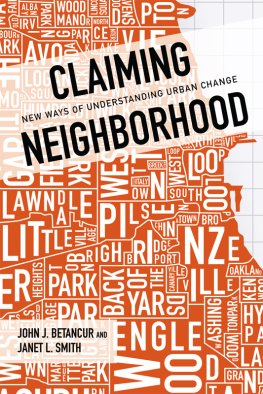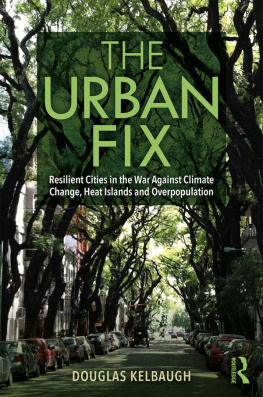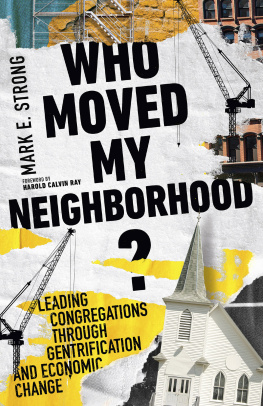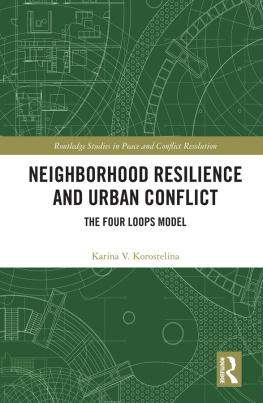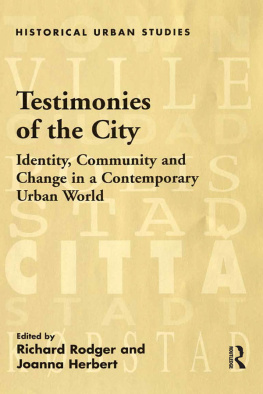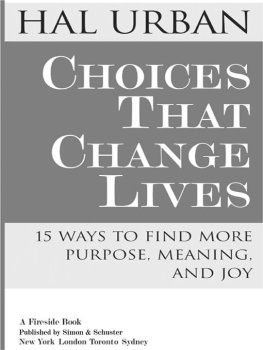This book is dedicated to all those in the struggle to claim their neighborhoods, and especially to Doug Gills, our colleague and friend, who did so much for Chicagos neighborhoods.
2016 by the Board of Trustees
of the University of Illinois
All rights reserved
1 2 3 4 5 c p 5 4 3 2 1

This book is printed on acid-free paper.
Library of Congress Cataloging-in-Publication Data
Names: Betancur, John Jairo, author. | Smith, Janet L., 1962 author.
Title: Claiming neighborhood : new ways of understanding urban change / John Betancur, Janet Smith.
Description: Urbana : University of Illinois Press, 2016. | Includes bibliographical references and index.
Identifiers: lccn 2016030961 (print) | LCCN 2016036726 (ebook) | ISBN 9780252040504 (hardback : alk. paper) | ISBN 9780252081972 (paperback : alk. paper) | ISBN 9780252098949 ()
Subjects: LCSH: City planningIllinoisChicago. | Neighborhood planningIllinoisChicago. | Cities and townsGrowth. | Urban policyIllinoisChicago. | BISAC: POLITICAL SCIENCE / Public Policy / City Planning & Urban Development. | POLITICAL SCIENCE / Public Policy / Social Policy. | SOCIAL SCIENCE / Sociology / Urban.
Classification: LCC HT 168. C 5 B 48 2016 (print) | LCC HT 168. C 5 (ebook) | DDC 307.1/2160977311dc23
LC record available at https://lccn.loc.gov/2016030961
Introduction
Real Property (along with construction) is no longer a secondary form of circulation, no longer the auxiliary and backward branch of industrial and financial capitalism that it once was. Instead, it has a leading role, albeit in an uneven way for its significance is liable to vary according to country, time or circumstance. Capitalism has taken possession of the land, and mobilized it to the point where this sector is fast becoming central. Why? Because it is a new sectorand hence less beset by the obstacles, surfeits, and miscellaneous problems that slow down old industries. (Lefebvre 2004, 335)
T his book examines the contradictions, contentions, and coincidences shaping urban space in the context of Chicago, the genesis of scholarly and applied studies of neighborhood change in the United States and beyond. We are particularly interested in the forces affecting neighborhoods, including what results from urban policy, elected officials, investors, speculators, planners, service providers, resident leaders, institutions, and community-based organizations. Our intent is simple: to better understand the underpinnings of neighborhood change over the past few decades and to consider what might happen in the near future. We argue that current theoriesthe tools used by academics and policy makers to explain how and why neighborhoods changelimit our ability to interpret what is actually happening while at the same time advancing in a veiled form a specific position or point of view and mandate. In particular, long-standing assumptions about what a neighborhood is and its importance in our lives rely on an image from the past that never existed and that ignores or hides the realities on the ground. Whether romantic or ideological, concealing or oppressive, this image of the neighborhood needs to be revisited, and its usefulness in explaining contemporary urban space and in guiding policy needs to be re-examined.
What follows has deep implications for theory, policy, and practice. Our goal is to inform the conversations people are having in communities, nonprofit organizations, classrooms, local governments, foundations, and policy think tanks about addressing systemic inequalities and how best to redistribute resources and opportunities. Unemployment, crime, poor school quality, crumbling infrastructure, abandoned homes, and vacant land continue to be pressing concerns in many of our neighborhoods today. How we understand and deal with these conditions matters. In this book, we focus on the logic that underlies most of todays neighborhood-oriented policies and practices, which blame low-income people for these conditions rather than structural factors such as racism and class bias, and we focus on public policy that turns to real estate development as a primary vehicle to improve low-income neighborhoods. As a result of these policies, the conditions that deprive low-income neighborhoods of opportunities are sidestepped, residents and their communities are often criminalized, and land is cleared to induce investment. In contrast, affluent communities with higher real estate values can afford first-rate schools, new and improved infrastructure, and social services. A better understanding of the interrelationship between these disparate spaces is critical given the prominent role real estate plays in urban policy today.
This book is intended for students, researchers, and practitioners interested in neighborhoods and how and why they change. At the theoretical level, we reveal the limitations of the prevailing orthodox approaches to the study of neighborhood change while concurrently advancing a type of inquiry that is capable of generating alternative explanations. A strong theme is the role representations of neighborhoods play, particularly through the lens of race and class, in shaping land values and investment, causing real estate in white, middle-class communities to appreciate while disinvestment and property loss occur in predominantly nonwhite, low-income communities. The linkage, we argue, is the commodification of space that has transformed neighborhoods into sites from which to create and extract value. This includes current efforts to entice higher-income families to live in cities, replace public housing with mixed-income communities, attract tourists to ethnic neighborhoods and suburbanites to the city for entertainment, as well as many community-driven plans to redevelop disinvested commercial sites and housing. We provide rich case studies to illustrate how specific strategies aimed at improving neighborhood conditions have contributed to this transformation and will continue to do so as long as past and contemporary interpretations of neighborhood change drive policy and practice.
What Is a Neighborhood?
This is not an easy question to answer. In this book we consider neighborhood to be a freely used term that is often used without having a precise definition in mind. We will take into consideration the fluidness of this term as we problematize the concept of neighborhood change. Still, there are some basic assumptions that we want to lay out before we move forward. As a starting point, most agree that a neighborhood is a place in which people live, and at a more personal level, it is the area surrounding ones home (Pebley and Sastry 2004). Neighborhoods are also assumed to have some sort of boundary to differentiate one from another, but these cannot easily be pinned down by asking residents or researchers (Taylor 2012).
Researchers treat the neighborhood as a unit of analysis that includes people and other things such as grocery stores, schools, and parks that are joined together in an enclosed space. Socioeconomic data and other spatial statistics are often assembled and used to analyze neighborhood characteristics. In the United States, social scientists have been doing this since the early 1900s with data delineated by the US Census as tracts, which have become proxies for neighborhoods. Then and now, the average size of a census tract is about four thousand people, which, depending on the density, can be a small or large area. Urban planners in the 1920s assumed this population size was sufficient to support a local school and other amenities expected in a neighborhood (Perry 1929). More recently, transit-oriented development and walkability standards have reinforced this scale, assuming that most amenities should be within a walking distance of ones home (usually a half-mile radius), which then dictates a certain density and land use mix.
 This book is printed on acid-free paper.
This book is printed on acid-free paper.
